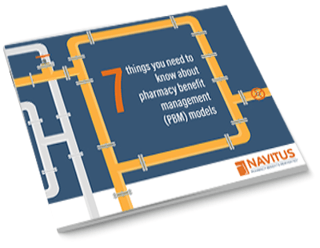When it comes to pharmacy benefits, millions of dollars are at stake. That's why today's marketplace is demanding more transparency, greater accountability and higher performance. One way plan sponsors can achieve these goals is to audit their pharmacy benefit manager (PBM).

Through an audit, plans can:
- Get visibility into how their pharmacy benefit is working
- Hold their PBM accountable to the agreed services and
- Recover funds lost through processing errors and overpayments
Ultimately, plans can use audits to identify opportunities for improvement and take plan performance to new heights.
WHY AUDITS ARE IMPORTANT
Pharmacy benefits for an organization can consist of millions of claims and hundreds of millions of dollars. With multiple groups and complex plan designs, one processing or coding mistake can turn into a huge expense. Any PBM can make mistakes and regular audits provide visibility so they can be corrected. However, audits can do much more. They allow plans to measure PBM performance against the contract. With a thorough claims analysis, audits evaluate every contract component from pricing, discounts and rebates to performance guarantees, plan design, clinical and eligibility. In the most transparent arrangements, plans may have audit privileges down to the claim level for all claims. However, audit rights can vary among PBMs, depending on business model and philosophy. Some may only provide a “claims sample” or small percent of claims and handpicked contracts, which limits visibility into performance and reduces opportunities for improvement.
WHERE TO START
With so many audit components, it may be difficult to decide where to start. One of the most important areas is pricing. This involves a thorough review and analysis of what the pharmacy was paid versus what the plan sponsor was billed. In a traditional arrangement, the PBM may take a spread and charge the plan sponsor more than the pharmacy was paid. In a pass-through arrangement, the PBM bills the plan the same price it paid to the pharmacy. This visibility can help plans determine if this is the best arrangement to meet their goals.
HOW TO GET STARTED
To get started with an audit, plans should consider using a reputable third party firm. Typically audits take anywhere from three to six months to complete. Although time and resource intensive, audits can reassure proper performance, identify opportunities for improvement and help recover lost dollars. According to a large consulting firm’s estimate, plans can expect to identify issues with 3-5% of claim costs with the potential to recover 1-2%. On the other hand, with more fine-tuned management plan sponsors may find minimal to no errors.
To sum up, plan sponsors who want to achieve greater transparency and accountability and really rev up their pharmacy benefit plan performance should consider conducting regular audits. This will ensure the PBM’s alignment to their goals and put them in a position to demand higher levels of service and performance.
To learn more about PBM models and how to get the transparency and performance you’re looking for, simply download our eBook: The 7 things you need to know about PBM models.






